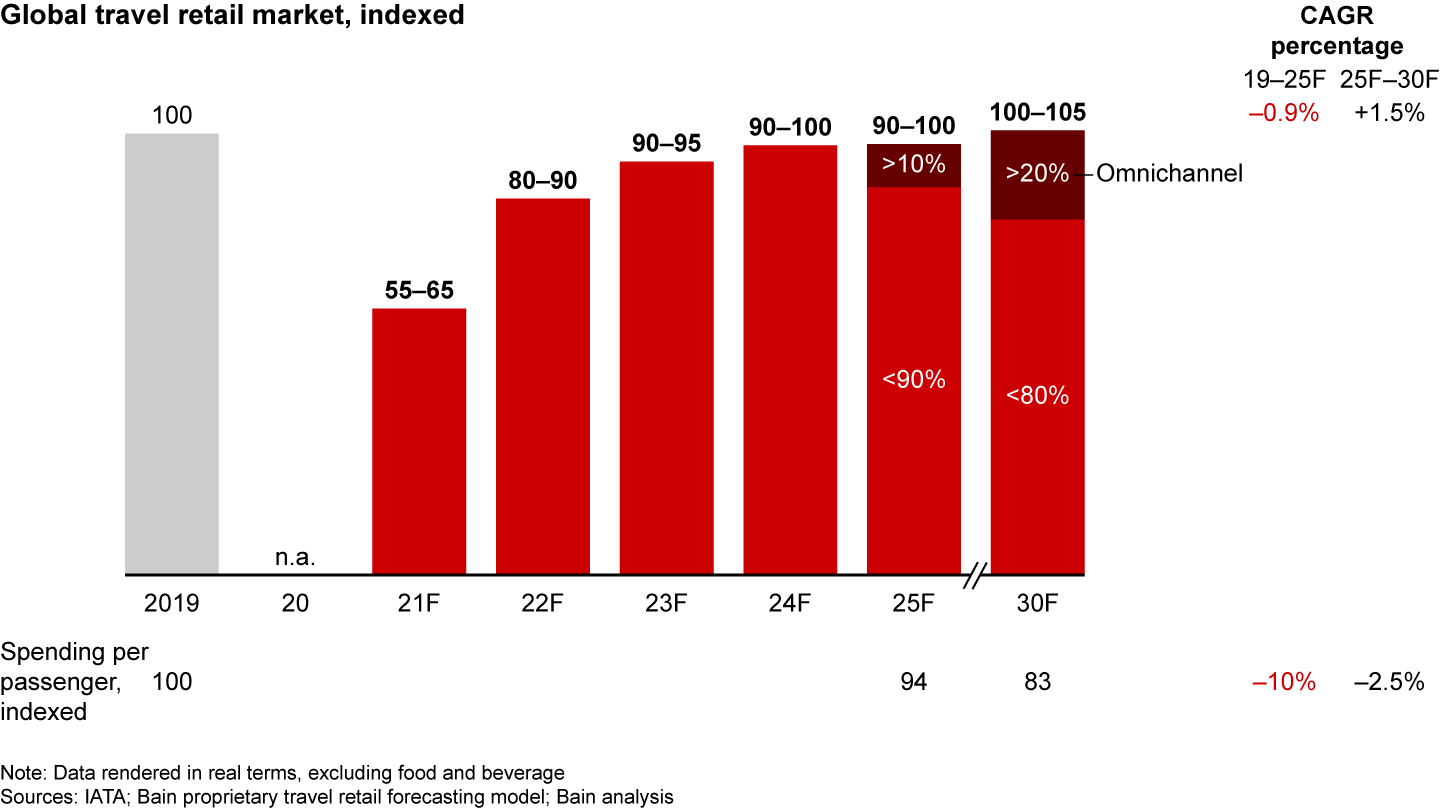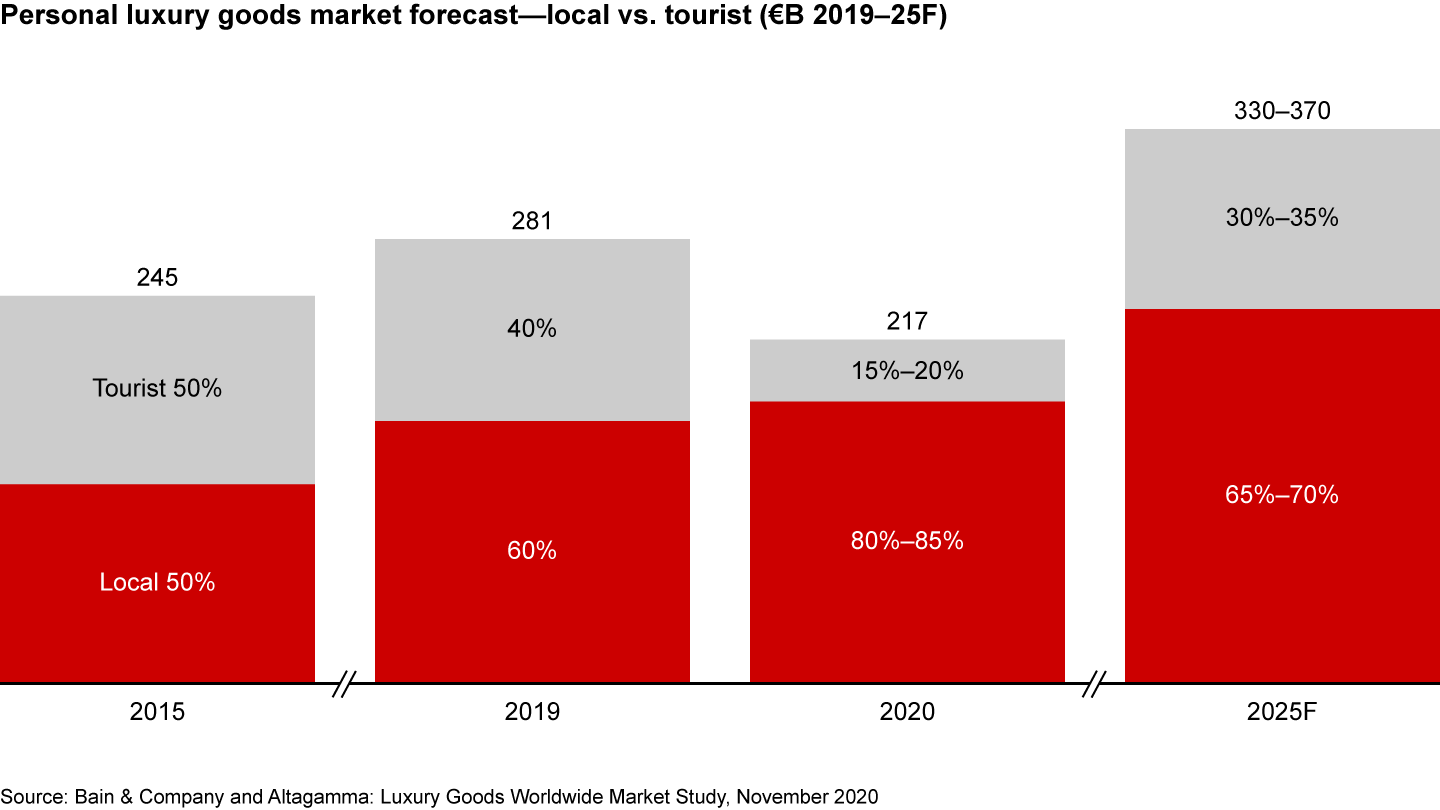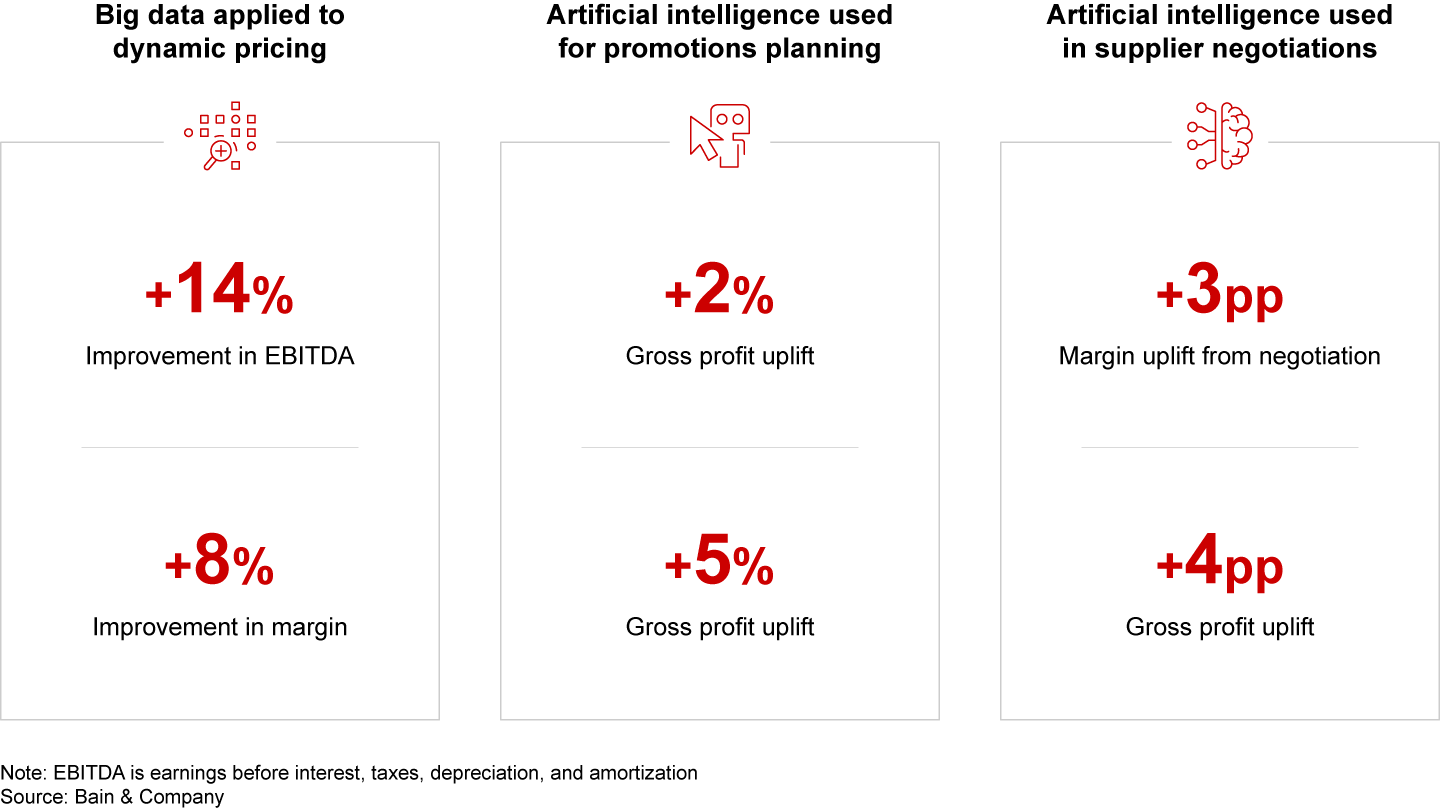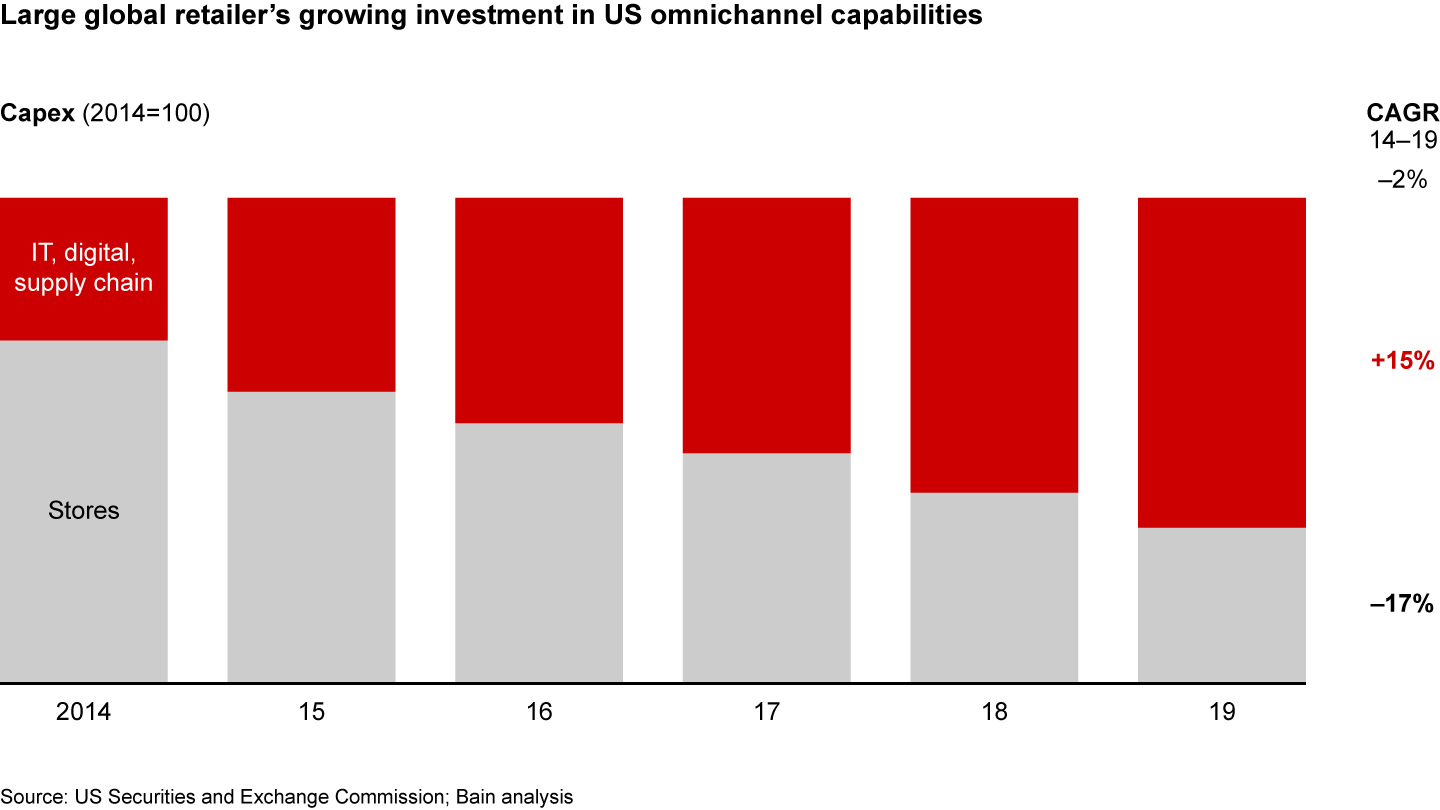Brief

At a Glance
- Airport retailers face a shift to younger, less affluent travelers.
- To remain relevant, airport retail shops need to embrace digital retailing.
- Bain research shows omnichannel customers spend twice as much as brick-and-mortar customers and have a Net Promoter Score℠ that is two times higher.
Airport retailers face the biggest disruption to their business since the industry’s inception—one that will rapidly redefine winners and losers. By 2025, the digital technologies that have reshaped the wider retail industry will radically transform traditional airport shopping, paving the way for omnichannel sales, the seamless connection between digital platforms and in-store shopping.
Written in collaboration with
Written in collaboration with
![]()
It’s a dramatic shift, but it’s only half the change confronting the industry. To thrive in the coming decade, airport retailers need to change not only how they sell but what they sell. An increase in the proportion of younger and less affluent travelers (Gen Y and Z) has led to declining demand for traditional airport products and services. By 2025, this group will make up more than 50% of all passengers, while the share of business travel, long-haul groups, and Chinese passengers—traditional consumers of the luxury goods sold at airports—declines. At the same time, the share of high spenders moving through airports will decline by more than 5%, and the percentage of airport retail sales directly influenced by online sites will rise to 30%, up from low single digits today.
Catering to younger, digital-savvy consumers, airports of the future may be dotted with clubs offering short fitness or yoga classes, culinary shops proposing 30-minute courses in Italian cuisine, music listening rooms featuring concert hall quality sound, or digital measurement services that ensure the perfect-fitting shoe, which can be delivered to you anywhere in the world.
Despite the tectonic shifts in the industry, most travel retailers are just in the early stages of developing digital and omnichannel strategies—and few have started rethinking their product strategy. Companies that don’t adapt quickly to these disruptive changes may not survive—a painful lesson that many nontravel retailers have learned over the last two decades. Already, several top travel retailers and digital leaders are teaming up to reinvent the airport sales landscape. Recent partnerships including Alibaba with Dufry and JD.com with Lagardère aim to accelerate the development of omnichannel business models and customer experiences linked to brands.
A perfect storm
Change was inevitable, but Covid-19 speeded up the shift, creating a perfect industry storm. Airport management companies and retailers now must rapidly overhaul their sales and marketing strategies while grappling with flat to declining revenues, sharply lower profits, declining passenger traffic (compared with pre-Covid forecasts), and vacant retail space (see Figures 1 and 2).


Of course, travel retail demand patterns will vary by type of airport, geography, and passenger mix. But the broad trends toward omnichannel retailing and changing passenger tastes are global, and airport retailers everywhere will need to adapt to both trends. Industry forecasts show the increase in the proportion of younger, less affluent passengers is likely to be a long-term trend. Many corporations plan to reduce business travel and make greater use of virtual meetings. At the same time, low-cost carriers continue to increase their market share, using lower prices to stimulate demand from (often) less affluent consumers with different tastes and buying behaviors. The growing market share of Ryanair, easyJet, Southwest Airlines, and others is one reason travel retail was starting to show signs prior to Covid of lower spending per passenger in real terms—and it means trimming costs alone won’t solve the problem.
Already, the shift in travelers’ buying behavior has prompted companies selling top-branded luxury products to shift their strategic focus from airport retail shops to downtown stores and omnichannel platforms (see Figure 3). To remain relevant, airport shops need to embrace digital retailing. Gen Y and Z customers expect an omnichannel sales option when making travel retail purchases, as they do in downtown retail.

As many leadership teams know, going digital is complex. An omnichannel retail strategy requires investment in customer relationship management (CRM), big data, and advanced analytics capabilities. And investing in these technologies is just the first step. An omnichannel approach redefines the role of stores. Instead of being a location to purchase goods, they become one of several touchpoints in a physical and digital universe designed to trigger interest in brands or brand-linked experiences and deepen customer relationships.
The challenge for travel retailers and airport executives that invest in an omnichannel approach is to embrace new ways of working that allow rapid experimentation as customer behavior changes and the role of the store evolves. For example, retailers need to be nimble enough to add a new product or digital feature in a few test stores and evaluate within weeks what works and what doesn’t before introducing them in all stores. The good news is, omnichannel customers are more profitable, and they consistently spend more frequently and with a higher average ticket. Bain research suggests omnichannel customers spend twice as much as brick-and-mortar customers and have a Net Promoter Score that is two times higher.
Given the industry outlook for slow to flat growth in airport retail sales over the next 5 to 10 years, successful companies will need to capture a greater share of airport retail revenues to deliver growth. Leaders are taking five key steps to reset their performance targets and strategies:
Increase passenger penetration in shops. A forecast reduction in the volume of passengers in the next five to six years creates a new challenge for airport retailers. To generate growth, leaders are aiming to roughly double passenger penetration in their shops by reviewing the mix of product categories, integrating experiences in shops, and increasing customer engagement through an omnichannel customer journey.
Invest in digital capabilities and customer relationship management tools. Digital and CRM tools provide retailers with valuable knowledge of the customer. They also improve retailers’ ability to adapt rapidly to changes in demand. Leaders aim to raise the level of sales tracked by CRM to at least 40%; build the capabilities to generate personalized, tailored interactions and engagement; and test and learn quickly to understand what works and what doesn’t, a practice that has become common in the retail industry.
Domino’s Pizza wielded digital tools to make ordering easier, faster, and more transparent. Its innovative apps delighted customers, galvanized sales, and boosted market share. Since launching a digital transformation in 2009, Domino’s total revenue nearly tripled to $4.1 billion in 2020, and digital sales channels now account for 75% of all orders.
Shift to a data-driven commercial strategy. Raw data collected from sales transactions and other sources are key to understanding consumers and tailoring offers through dynamic pricing (prices set based on external market factors), artificial intelligence promotion planning, and advanced analytics. In our experience, dynamic pricing can improve EBITDA by 8% to 14%. Artificial intelligence in promotions planning can lift gross profit by 2% to 5% (see Figure 4).

Develop an omnichannel airport retail strategy. By 2025, consumers will consider omnichannel shopping—the ability to navigate seamlessly between digital platforms and physical stores—as standard. And airport retail space will dedicate a large proportion of space to selling brand-related experiences in addition to products. Successful airport retailers will adapt downtown omnichannel practices and mechanics to the airport setting and increase investment in digital sales platforms and supporting supply chain capabilities, while reducing the share of capital expenditure on stores (see Figure 5). They will aim to achieve a minimum 20% of total sales through omnichannel within the next three years, up from the low single digits today.

Rethink commercial contracts. Traditional contracts between travel retailers and airports based on a fixed rental rate plus minimum annual guaranteed payments (Rent + MAG) are ill-suited to the fast-changing airport retail market. In an omnichannel environment, for example, tracking sales generated by a specific store is difficult. Contracts based on a long-term partnership will support the shift to omnichannel retailing, encourage innovation, and allow for experimentation and failure.
New airport retail strategies will also benefit airport management companies as they cope with wrenching change. One big challenge is the unprecedented level of excess capacity for the next 10 years. Our research shows aviation revenues could fall from about 60% of total airport revenues to around 45%. Airport management companies will need to increase nonaviation revenues, including retail, to compensate for lower capacity utilization and lower aviation revenues.
Airport commercial executives, like retailers, can help counter these trends by increasing passenger penetration and supporting the shift to omnichannel retailing. To succeed, airports need an enlarged ecosystem of partnerships that bring them strong digital, omnichannel, and CRM capabilities.
Monday morning 8 AM
The airport retail industry is on the verge of digital reinvention. To succeed in a wholly new landscape, retailers need to increase their technological savvy. They also will need to build or join an omnichannel ecosystem. Already, digital natives like Amazon are scouting for new opportunities to expand their retail business in airports. And airports are launching new websites and trying to expand their brick-and-mortar real estate business to digital real estate. Companies that take a wait-and-see approach risk being outpaced by the competition.
Three strategic questions can help executive teams get started preparing for the pivotal shift ahead:
- What investments are most urgent to make the shift to a retail technology company?
- Should we build our own omnichannel ecosystem or is it smarter to become part of an existing one?
- Do we have the CRM expertise and a sophisticated commercial proposition to be an attractive partner for airports in a changing market?
Net Promoter®, NPS®, and the NPS-related emoticons are registered trademarks of Bain & Company, Inc., Satmetrix Systems, Inc., and Fred Reichheld. Net Promoter Score℠ and Net Promoter System℠ are service marks of Bain & Company, Inc., Satmetrix Systems, Inc., and Fred Reichheld.

About The Moodie Davitt Report
The Moodie Davitt Report is a leading media and business intelligence company focused on the travel retail and airport commercial revenues sector. It is the only global B2B company dedicated to the entire travel retail ecosystem including shopping, food and beverage, advertising, foreign exchange, car parking and airport consumer experience. The company publishes its titles across a range of digital platforms, organizes industry events, conducts research and offers consultancy services.




